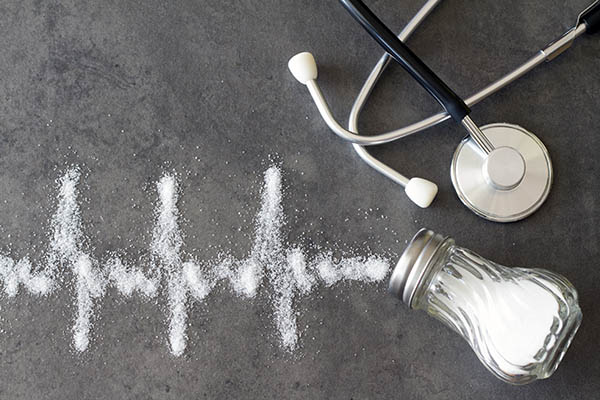The impact of salt on blood pressure
 Reducing blood pressure is a vital step in improving your cardiovascular health. Excessive sodium consumption can increase blood pressure, and higher blood pressure levels can lead to other health problems, including heart attack and stroke.
Reducing blood pressure is a vital step in improving your cardiovascular health. Excessive sodium consumption can increase blood pressure, and higher blood pressure levels can lead to other health problems, including heart attack and stroke.
“Consuming excessive sodium can cause fluid retention and increased blood volume, which in turn elevates blood pressure levels,” says Vincent Figueredo, MD, a cardiologist with Trinity Health Mid-Atlantic. “This puts an added strain on the heart and blood vessels, contributing to hypertension.”
Dietary guidelines by the FDA suggest American adults should limit sodium intake to less than 2,300 milligrams per day, which is about equal to one teaspoon of table salt.
It’s long been said that prevention is the best medicine. With that in mind, we’ve complied a short list of some popular snacks and their sodium content, to help you portion them out and satisfy your cravings.
Examining salt content in popular snacks
Nacho-flavored corn chips:
The smallest bag of nacho flavored corn chips you can purchase at your local supermarket contains one ounce of chips, which is equal to about 12 full chips. This serving size contains 210 milligrams of sodium, which is about 10 percent of your daily sodium intake.
Tips: It can be hard to eat just one serving, or less, of chips in a sitting. However, if you measure out the amount you are going to eat and put the bag away right after, you are less likely to eat more.
Chocolate bar:
A full-size chocolate bar, without any nuts or add-ins, typically includes 35 milligrams of sodium. That equates to about two percent of your daily recommended intake.
Tips: Even sweet snacks can hide a surprising amount of sodium. Look at the salt content of your favorite sweet snacks and swap out high-sodium sweets with lower or even no-sodium sweet snacks such as: fresh fruit and vegetables, no salt granola and unsalted mixed nuts.
Root beer:
A typical can of root beer contains 65 milligrams of salt per 12 fluid ounces, which equates to around three percent of your daily recommended intake.
Tips: The amount of sodium in soda varies widely depending on the type you choose. Sodium content in popular sports drinks can be even higher than popular sodas. Drinking a glass of water before consuming soda can help reduce your cravings. While the sodium content may be low in root beer, sugar can also worsen the risk for heart disease as well as many other diseases.
